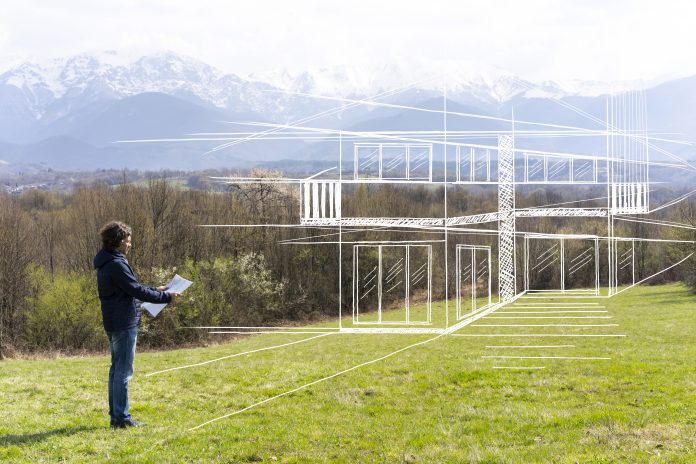Embedding climate resilience won’t happen, argues Atkins Associate Directors Viral Desai and Catalina Gallego Lopez, without our town planners – the people that bring economics, data-informed strategies and the environment together to build a sustainable future for tomorrow
The effects of climate change are escalating rapidly. And increasingly, they’ll be seen not in the news, but at home – in our cities, towns and villages. From severe heat waves and droughts, to coastal erosion, rising sea levels and flooding, our infrastructure will face comprehensive challenges in the coming years. Yet we’re still missing a common agreement on how best to meet the moment and embrace climate change resilience. Other growing pressures, such as housing shortages, demographic changes and tightening budgets, are constricting progress.
One thing is sure, though. The decisions we make in the next few years will determine the resilience of our future infrastructure. And from adaptation to mitigation, there is a limited window of time to affect the necessary scale of change. It will take years for any projects approved today to come online. So the longer we wait to pivot our planning efforts, the more costly and urgent decisions will become.
That’s why today’s planner lies at the heart of tomorrow’s climate change resilience. Uniquely placed to see the bigger picture, collaborate across disciplines, and integrate sustainability into everything we build, the planner is essential to managing the delicate balancing act between conflicting agendas and fulfilling a long-term vision. Only if we unite people, data and technology will we truly be able to tackle climate change – and no role is better suited to lead that integration than planners.
Eye of the storm
Two key obstacles, however, lie in the path to change. The first is a lack of consensus, with many priorities pulling in different directions. Given the choice between desperately needed housing, more accessible healthcare or greener spaces, there’s rarely clear agreement about which is most beneficial. Moreover, at a communications level, it can be a challenge to filter wider climate mitigation solutions down into local actions.
Local communities and businesses across the world are all affected differently, speaking a range of technical languages, yet people must work together to generate truly inclusive outcomes. All too often though, responses are poorly coordinated – both in developing and developed countries.
Second, resources are already stretched. Finance and human capacity are both critical to mitigating the effects of climate change. Yet even major infrastructure projects are facing worsening skills shortages. And the investment needed to properly embed climate change resilience in our towns and cities is considerable, at a time when local authority budgets have never been so squeezed.
It may seem simple to encourage active travel with pedestrian areas or cycle lanes, but in the longer term, how does that balance with the economic health and connectivity of an area, and does it represent an optimal use of limited available investment? Is it transformational?
Blue-green shoots
To make better, more clear-sighted decisions to answer those tough questions, the planner of today has a range of new tools. Data, for instance, is transforming understanding of our ecosystems and streamlining design. By providing line of sight both to wider trends and local specifics, data is unlocking a new level of strategic insight. And by benchmarking high quality data from the outset, data is improving and accelerating project processes.
Environmental impact can now be more accurately understood – and sometimes avoided even before a pen is put to virtual paper – whilst also tracked and delivered throughout a project. Working with Edinburgh city council, Atkins has provided a blueprint to other local authorities of the value of a data-driven approach, mapping the city’s blue-green assets using data, to develop a strategic plan for future development. Data offers a way to cut through the complexity.
Mindsets are changing too. The concept of natural capital is now altering traditional patterns of investment, integrating externalities and guiding economic incentives towards sustainability. We’re still at a stage where this transition is in progress, but the natural world is rising up the priority list. It’s becoming clearer every year that some of our strongest protection against climate change lies in restoring habitats and ecosystems, whether that’s as upland flood defences or greener, cooler cities. COP15 in Montreal illustrates that governments across the world are taking the risks and opportunities of re-greening seriously.
The shape of things to come
But momentum needs maintaining, and planners are especially well placed to progress the conversation, with both clients and the public. And there is still a lot of room for improvement. There needs to be more focus on natural capital, understanding the value of nature in development economics to drive change and prioritise the natural world. Legislation is moving too slowly, and without an energetic regulatory impetus, neither are climate change resilience practices. Regulators themselves need to lead the way. Planning is such a powerful vehicle for changing the conversation, yet it’s not used enough.
To better deploy resources, countries should integrate their planning policy, at a national, regional, and local level. That’s the only way to build efficiently and sustainably at scale. Likewise, data standardisation is a priority – to avoid a patchwork of different metrics and strategic directions, regeneration and planning must be informed by high-quality consistent data. To make these all happen, we need a strong vision and leadership.
Introducing the integrators
Planners are the glue of modern infrastructure projects – we are the project integrators. As planners we need to stop thinking of ourselves as just town planners, urbanists or environmental planners, but see ourselves instead as solvers of tomorrow’s problems. By collaborating across disciplines, we can occupy a vital space in influencing policy and decision making, ensuring that the different strands of a project come together for maximum impact.
Furthermore, planners have an unparalleled position to bring the environment to the forefront of the design process, nurture and deploy strategic oversight, and push what is currently cutting-edge towards business as usual. Separately, planners can build community support for climate resilience measures, and to ensure that those measures are implemented in a way that is equitable and inclusive.
Planners could lead the charge on climate change resilience
Sustainability is nothing new to the planning industry – it’s built into our DNA. Yet we now have a golden opportunity to bring it to life across our societies. Attitudes are converging on a greener consensus and increasingly prioritise wider social and environmental benefits, not just specific outputs.
As the climate challenge grows more acute, these shifts will only accelerate. Town and environmental planners, therefore, need to be given the opportunity to lead the way. Only by working today to envisage, enhance and embed climate change resilience, can we build an enduring, habitable environment for tomorrow.














![[VIDEO] Local planning inspector recruitment to begin in earnest in new year A drive to recruit local planning inspectors will begin in the new year](https://www.pbctoday.co.uk/news/wp-content/uploads/2025/12/iStock-2159482095-2-218x150.jpg)